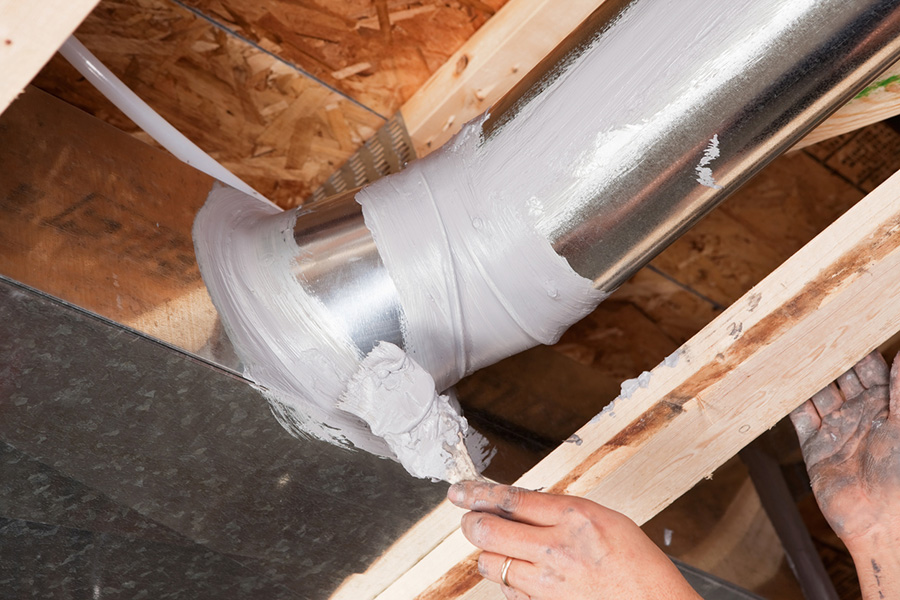Serving Nashville and the Middle Tennessee Area

Are Your Ducts Leaking? Here’s Why That Matters
You might not give your ductwork much thought, but if those hidden airways are leaking, your comfort and energy bills could take a serious hit. Leaky ducts can let cool air escape into your attic or crawlspace instead of into your living room—making your system work harder and your home feel less comfortable. The worst part? Many homeowners don’t even know it’s happening. That’s why The Maynard Man wants to help you understand what duct leaks are, how to recognize the signs, and why they’re more than just a minor inconvenience. Knowing what to look for can save you money, improve indoor air quality, and make every room feel just right. Let’s take a closer look at what happens when your ducts are working against you.
What Happens When Ducts Leak?
Your HVAC system is designed to move conditioned air through a network of ducts and into every room of your home. But when those ducts have holes, gaps, or loose connections, that precious cooled or heated air can escape into areas you don’t use—like attics, crawlspaces, or wall cavities. That means your system has to work harder and longer to keep your home at the desired temperature. Not only does this reduce comfort, but it also leads to wasted energy and higher monthly bills. You’re essentially paying to cool or heat spaces that don’t need it. Over time, the strain from trying to overcome these losses can shorten the life of your HVAC system and lead to more frequent repairs.
Signs Your Ducts May Be Leaking
Leaky ductwork often hides in plain sight, but your home will usually offer some clues. If you know what to look for, you can catch the problem early and avoid a drop in comfort or a spike in costs. Here are some of the most common red flags:
Uneven Temperatures
Are some rooms always too hot in summer or too cold in winter? Inconsistent comfort between rooms often points to duct leaks that are preventing even airflow.
Rising Energy Bills
If your cooling or heating costs have climbed but your usage habits haven’t changed, air loss through ductwork could be a hidden culprit.
Excess Dust or Allergies
Leaky return ducts can pull in dust, insulation, and other contaminants from unconditioned spaces—pushing them into your living areas and lowering air quality.
Weak Airflow
When air escapes before it reaches the vent, it shows up as low air pressure. If your vents feel weak even when the system is running, your ducts may be to blame.
Why Duct Leaks Are a Bigger Deal Than You Think
At first, a little air loss might not seem like a big problem—but the impact adds up quickly. On average, leaking ducts can waste 20%–30% of the energy used to cool or heat your home. That’s money spent on air you never feel, comfort you don’t experience, and performance your system can’t deliver. But the effects go beyond your wallet. Leaky ducts can allow dust, insulation particles, and outdoor allergens into your air supply, degrading your indoor air quality and potentially triggering allergies or respiratory issues. They also make your HVAC system run longer and harder, leading to unnecessary wear and reducing its overall lifespan. Fixing those leaks isn’t just about airflow—it’s about protecting your comfort, your health, and your investment.
What Causes Duct Leaks?
Duct leaks can develop from several different sources, and many of them build up slowly over time. One of the most common causes is poor installation. If duct joints weren’t properly sealed or supported during setup, they’re more likely to shift, separate, or deteriorate under pressure. Aging ductwork is also vulnerable. Seals and connectors can dry out or crack, especially in areas with extreme temperature swings like attics or basements. Vibrations from daily system use, small animal intrusions, or damage from home renovations can also leave behind holes, punctures, or disconnections. Even well-installed ducts won’t last forever—routine inspection is the best way to spot early signs of wear before they affect your comfort.
How to Fix and Prevent Duct Leaks
The first step to fixing duct leaks is proper detection. A professional HVAC technician can perform a pressure test or use specialized tools like infrared cameras or smoke pencils to find hidden leaks in your ductwork. Once located, the leaks can be sealed using mastic sealant or foil-backed tape—both of which provide long-lasting results that hold up under pressure and temperature changes. Beyond sealing, it’s important to make sure your ducts are properly sized, connected, and supported. Sections that sag, shift, or vibrate too much are more prone to future damage. In some cases, adding insulation around the ducts can also help improve efficiency and prevent temperature loss. Regular inspections—especially for older homes—will help catch new problems before they cost you in comfort or repairs.
Wrap-Up: Get Comfort Back Under Control with the Maynard Man
Leaky ducts are one of the most overlooked causes of rising energy bills, poor indoor air quality, and uneven comfort. But the good news is—they’re fixable. With a thorough inspection and professional sealing, your HVAC system can deliver better airflow, consistent temperatures, and long-term energy savings. Don’t let your heating and cooling dollars disappear into the attic or crawlspace. Contact Maynard Plumbing, Heating, Cooling to schedule a ductwork evaluation and make sure your air goes exactly where it’s supposed to—into your home, not out of it.
Recent News
How to Protect Your Pipes from Freezing During Cold Weather in Nashville
5 Signs Your Water Heater Needs Repair Before Winter Arrives in Nashville
How Regular Drain Cleaning Can Prevent Costly Plumbing Emergencies
High-ROI Home Improvements in Nashville
Energy Efficiency & Indoor Air Quality Blueprint for Tennessee Homes
Home Heating and Cooling Options: Ductless, Mini Split, and Heat Pump Explained
The Ultimate Nashville Home Maintenance Calendar
Schedule Service


